Welcome to our horticultural journey, where we explore the art of coaxing Mother Nature’s finest blooms. This blog delves into the secrets of enhancing female flowers in your vegetable garden with simple yet effective techniques. Female flowers play a crucial role in fruit production, and understanding how to boost their presence can lead to bountiful harvests. We present accurate and concise data to demystify the process, ensuring you can easily apply these strategies to your garden.
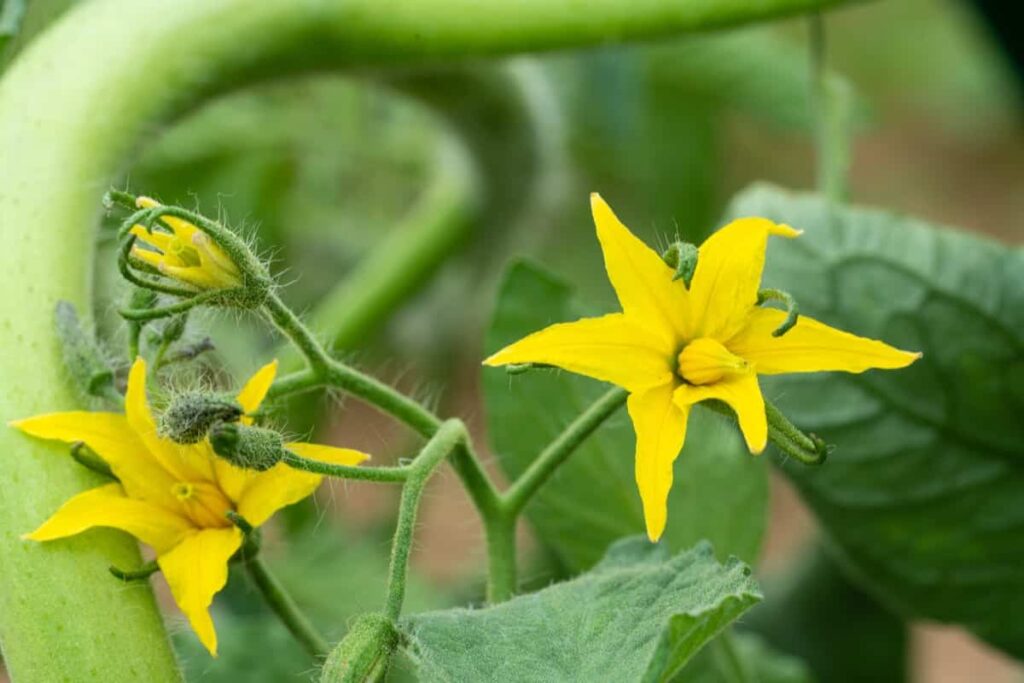
How to Encourage Female Flowers in Vegetables
What are Vegetable Crops Which Produce Female Flowers and Their Impact?
Female flowers produce fruits with seeds, providing nutrition and seeds for humans and animals. Pollination initiates fruit development by transferring pollen from male flowers, other plants, bees, and butterflies. This process promotes genetic diversity, adapting to changing environments and combating pests and diseases. Healthy female flowers directly impact crop yield, resulting in larger and more abundant harvests.
Zucchini (Cucurbita pepo)
- Female flowers are swelling at the base, which develops into the fruit.
- They are crucial for zucchini production, as they house the potential vegetable.
Cucumber (Cucumis sativus)
- Female flowers transform into the cucumbers we know and love.
- The key to yielding a plentiful cucumber crop.
Squash (Cucurbita spp.)
- Female flowers evolve into various types of squash.
- Vital for overall squash production.
Pumpkin (Cucurbita pepo or Cucurbita maxima)
- Female flowers give rise to pumpkins, a fall favorite.
- Essential for a successful pumpkin harvest.
Watermelon (Citrullus lanatus)
- Female flowers ultimately become watermelons, synonymous with summer.
- Crucial for the development of these juicy fruits.
Eggplant (Solanum melongena)
- Female flowers hold the promise of eggplants.
- A key factor in the eggplant cultivation process.
Okra (Abelmoschus esculentus)
- Female flowers lead to the formation of okra pods.
- Important for a steady okra supply.
In case you missed it: How to Germinate Seeds: Techniques for Faster Germination of Vegetables, Flowers, Fruits, and Herbs
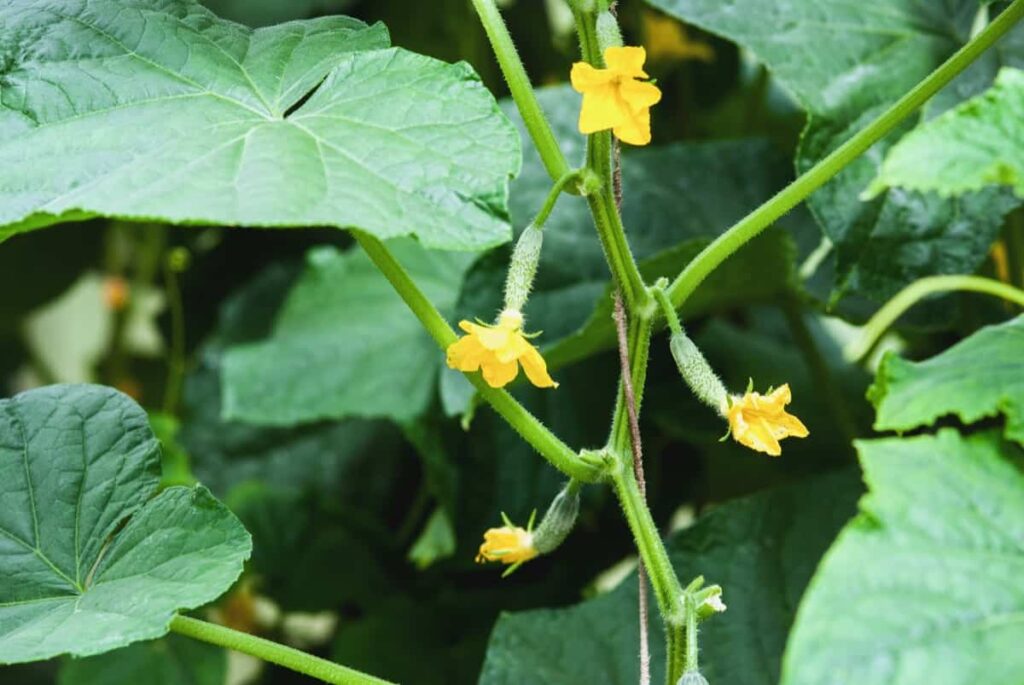
Cantaloupe (Cucumis melo)
- Female flowers metamorphose into cantaloupes, a sweet delight.
- Essential for a fruitful cantaloupe harvest.
Soybeans (Glycine max)
- Female flowers yield soybean pods, a versatile crop.
- The key for soybean production and its derivatives.
Impact of Female Flowers: Female flowers play a major role in vegetable production as they are directly responsible for fruit development. Once pollinated, female flowers transform into the fruits we consume. They contain the ovary, which houses the seeds and nutrients necessary for the growth of the vegetable. There would be no harvest without successful pollination and fruit set from female flowers. Thus, their presence is vital for vegetables’ overall yield and quality.
Understanding the Importance of Female Flowers in Vegetables
In the vegetable world, female flowers support pollination and ensure a bountiful harvest. In most vegetable plants, male and female flowers exist separately. Female flowers possess reproductive structures and develop into fruits after successful pollination. When bees, insects, or wind transfer pollen from male to female flowers, fertilization occurs, forming fruit. Female flowers display a small cucumber-shaped structure at their base, while males lack this feature.
Squash and zucchini also follow a similar pattern. These vegetables rely on female flowers to bear fruit, contributing to the yield. In contrast, male flowers are essential for providing pollen, initiating the fertilization process. Farmers and gardeners keenly observe female and male flowers balance to optimize pollination and maximize harvests. A shortage of female flowers can hinder fruit production, impacting food supply and biodiversity.
Providing Optimal Growing Conditions for Female Flowers in Vegetables
- Temperature: Female flowers in vegetables thrive best within a temperature range of 67°F to 78°F (20°C to 25°C). This temperature fosters proper pollination and fruit development.
- Sunlight: Provide at least 6 to 8 hours of direct sunlight daily. This enhances flower production and boosts overall plant health.
- Soil: A well-draining soil with a pH of 6.0 to 6.8 is ideal for promoting female flower and plant growth. Rich in organic matter, the soil supports robust root development.
- Watering: Maintain soil moisture without waterlogging. Regular watering, especially during dry spells, for optimal flower formation.
- Pollination: Encourage natural pollinators like bees and butterflies to visit your garden. This ensures effective fertilization and an increased fruit set.
- Nutrients: Employ balanced fertilizers containing nitrogen, phosphorus, and potassium to meet the plant’s nutritional needs and foster female flower production.
- Pruning: Properly prune to remove excess foliage, directing energy toward flower development.
- Pest Control: Implement natural pest control methods to protect female flowers from infestations.
Selecting the Right Varieties for Female Vegetable Flower Production
Research-backed varieties produce more female flowers, often recommended by agricultural research institutions or seed suppliers. Hybrid varieties are bred to exhibit excellent female flower production, often possessing desirable traits like disease resistance and higher yields. Day-length sensitivity is crucial for optimal female flower formation in vegetables like cucumbers and squash.
In case you missed it: Best Vegetables to Grow in Southern California: Planting Guide for Spring, Winter, and Summer
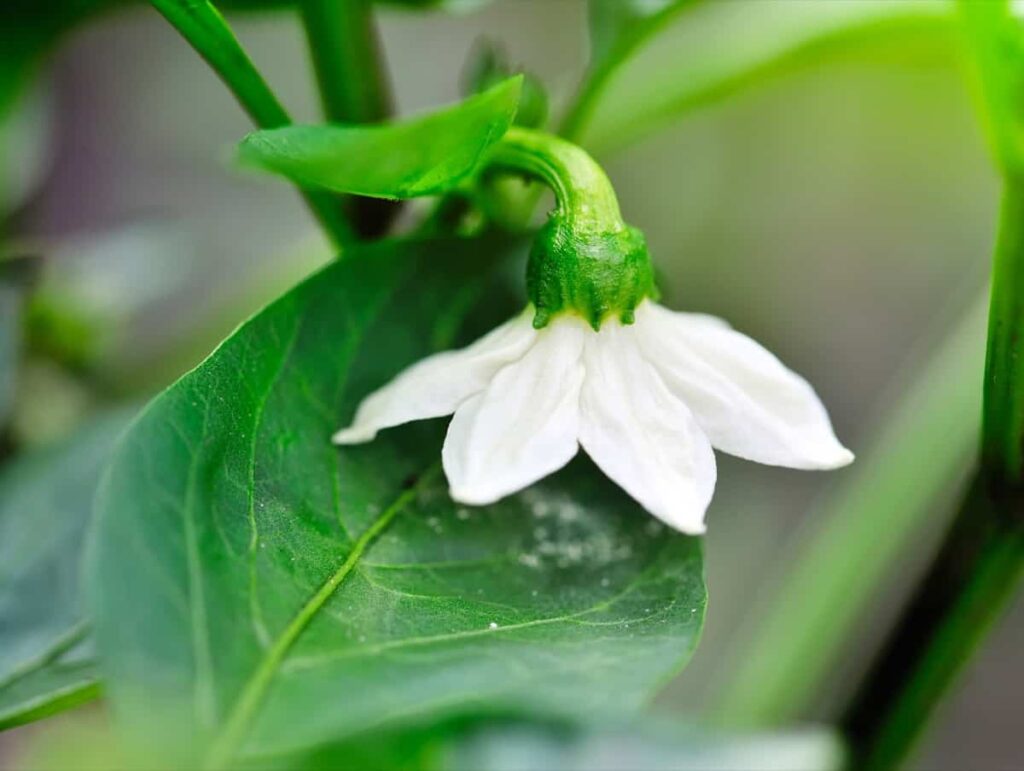
Parthenocarpic varieties produce female flowers that do not require pollination, leading to a consistent fruit set. Continuous harvest varieties ensure a prolonged harvest season by producing new female flowers. Examples include ‘Marketmore 76’ hybrid or ‘Suyo Long’ for cucumbers, ‘Golden Delight’ for squash, and ‘Black Beauty’ or ‘Green Machine’ hybrids for zucchini.
To ensure a successful harvest season, choose proven varieties with abundant female flower production, such as hybrids, day-length sensitivity, parthenocarpic cucumbers, and continuous harvest capabilities. These varieties ensure a lengthy harvest season and provide a variety of fruits with a high female flower count and exceptional taste.
Proper Soil Preparation for Female Flowers in Vegetables
For female flowers in vegetables, choose well-draining, loamy soil with an ideal balance of sand, silt, and clay for healthy root development. Maintain a pH between 6.0 to 7.0 to support nutrient availability and uptake. Soil with compost or well-rotten FYM to boost fertility and provide essential nutrients.
Ensure good soil aeration to enhance oxygen availability for roots and prevent root diseases. Water the soil consistently but avoid waterlogging to prevent flower drops. Apply organic mulch to retain moisture, regulate temperature, and suppress weeds. Regularly test the soil to monitor nutrient levels and adjust fertilizer applications. Practice crop rotation to prevent disease and pest buildup in specific vegetable families.
Implementing Effective Watering Techniques for Female Flowers in Vegetables
Drip irrigation is a method that delivers water directly to the root zone of plants, minimizing water wastage and reducing disease risk. A consistent watering schedule is recommended, preferably in the early morning or late afternoon. Organic mulch is applied around the base to retain soil moisture, regulate temperature, and reduce weed growth. Self-watering containers provide a steady water supply, especially for urban or limited-space gardening.
Rainwater harvesting is a sustainable option, free from chemicals, benefiting plants and the environment. Investing in a soil moisture meter helps prevent overwatering or underwatering and ensures optimal conditions for female flower development. Proper drainage is essential in containers or garden beds to prevent waterlogged soil, which can negatively impact flower growth.
Fertilizing Strategies to Promote Female Vegetable Flower Development
- Nitrogen, Phosphorus, and Potassium (N-P-K): A balanced fertilizer with higher phosphorus (P) content promotes female flower formation. For example, a 5-10-5 N-P-K ratio can enhance flowering in vegetables like tomatoes and peppers.
- Calcium-Rich Fertilizers: Calcium is crucial for female flower development in squash, zucchini, and cucumber plants. A calcium-based fertilizer helps prevent blossom end rot and ensures healthy flower production.
- Magnesium Supplements: Adding magnesium to the soil can improve nutrient absorption, increasing female flower formation in beans and peas.
- Plant Growth Hormones: Spraying plant growth regulators like cytokinins or auxins can stimulate female flower production in certain vegetables. For instance, treating cucumber plants with gibberellic acid can induce more female flowers.
- Organic Matter: Incorporating compost or well-rotted manure enriches the soil with essential nutrients, supporting robust female flower growth in various vegetables.
- Seaweed Extracts: Seaweed-based fertilizers are rich in micronutrients, promoting female flower development in broccoli and cauliflower.
In case you missed it: Harvest Fresh and Healthy: Best Top 10 Vegetables for Terrace Garden/Rooftop Farming
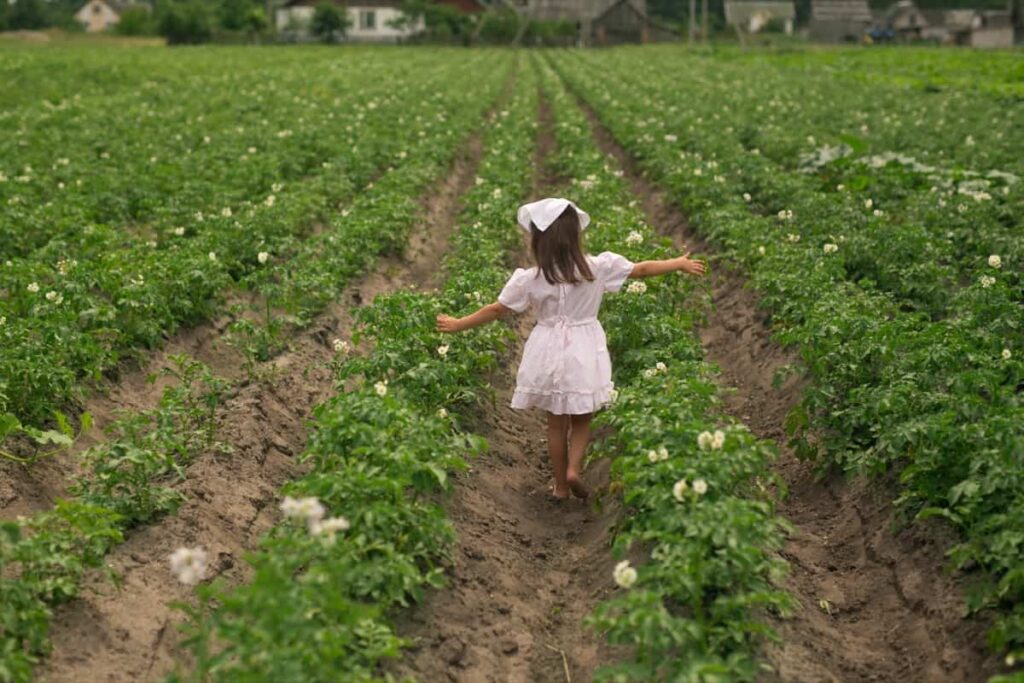
Managing Pests and Diseases Affecting Female Flowers in Vegetables
Pest control options for female vegetable flowers include neem oil, diatomaceous earth, and beneficial insects like ladybugs and praying mantises. Disease management involves crop rotation, proper watering, and organic fungicides like copper-based solutions. Physical barriers include floating row covers and mesh nets to protect female flowers from pests and allow sunlight and air. Compost is a healthy soil practice promoting plant vigor and increasing disease resistance. Floating row covers protect female flowers from pests, allowing sunlight and air to reach plants.
Enhancing Pollination for Female Vegetable Flower Formation
Create a diverse garden with various flowering plants to attract a wide range of pollinators, promoting cross-pollination for female vegetable flowers. Choose attractive flowers like marigolds and zinnias to attract pollinators, increasing their visits to female blossoms. Install bee houses or habitats near your garden, and use a small brush for hand pollination for delicate plants.
Avoid pesticides and use natural pest control methods to protect plants and pollinators. Plan vegetable planting during high pollinator activity, typically during warmer months, and provide a clean water source to attract pollinators and keep them returning to your garden.
Utilizing Companion Planting to Encourage Female Flowers in Vegetables
- Boost female flower power – mingle marigolds! With tomatoes and peppers, pests flee while pollinators party.
- Spice up growth – basil buddies! Cucumbers and beans cheer, pests jeer, and flowers bloom.
- Nasturtium’s trick – trap crop dance! Squash and broccoli rejoice; aphids and caterpillars lose their chance.
- Chives to the rescue – disease fighters unite! Carrots and lettuce smile, and female flowers take flight.
- Sunflowers save the day – wind warriors stand! Delicate veggies rest, female flowers undisturbed, winds at bay.
- Radishes the soil saviors – cucumber and spinach benefit! Soil structure thrives, nutrient absorption is sky-high, and female flowers flourish.
Pruning and Training Techniques for Female Vegetable Flower Production
Selective pruning involves removing weak and overcrowded branches to direct energy toward female flower growth. Pinching encourages lateral growth and more female flower buds, especially for tomatoes, peppers, and cucurbits. Trellising supports vining vegetables, enhances air circulation, reduces disease risk, and facilitates better female flower formation.
Spalier training plants against a flat surface promote even light exposure and balanced development. Pruning for light penetration allows sunlight to reach lower sections, promoting more female flowers. Implementing pruning and training early in the growing season ensures plants focus on female flower production for optimal results.
Protecting Female Flowers in Vegetables from Environmental Stress
Protect female flowers in vegetables from environmental stress, apply organic mulch, use shade cloth to diffuse sunlight, install windbreaks to shield plants from strong winds, maintain consistent watering, use frost cloths or row covers in extreme cold, and avoid overfertilization. Use balanced fertilizers in moderation, prevent disease through proper hygiene and timely treatment, and choose stress-tolerant vegetable varieties for better female flower survival. By following these guidelines, you can ensure your vegetables’ health and vibrant growth.
Monitoring and Adjusting Nutrient Levels for Female Flowers in Vegetables
Soil testing is crucial for determining nutrient levels, as it stimulates foliage growth more than flower production. Use low-nitrogen fertilizers to adjust nitrogen levels. Adequate phosphorus is essential for strong root development and promoting flower formation.
In case you missed it: Top 10 Vegetables to Grow With the Help of a Pergola
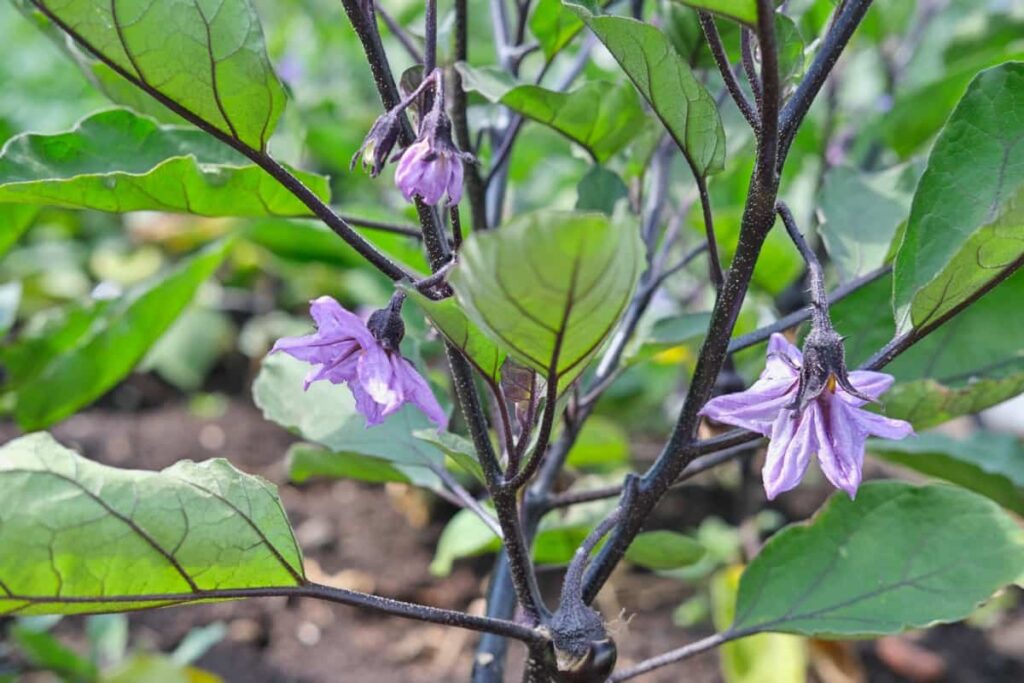
Potassium for overall plant health and flowering. Calcium prevents blossom end rot and enhances cell wall strength. Magnesium deficiency affects flower bud formation. Epsom salt is a quick remedy to increase magnesium levels. Monitor micronutrients like iron, zinc, and boron, as deficiency can hinder flower production. Use chelated forms for better absorption.
Recognizing Signs of Male and Female Flowers in Vegetables
- Male flowers are smaller and grow on slender stems, producing pollen for pollination. They are recognizable by their absence of swollen structures at their base.
- Female flowers are larger and have a swollen ovary at their base, containing fruit development after successful pollination. They often have a tiny, undeveloped fruit at their base, indicating their potential to bear fruit.
- Some vegetable plants are monoecious, with both male and female flowers same plant, while others are dioecious, with separate male and female plants.
- Proper identification of male and female flowers is crucial for effective pollination and fruit formation. Hand pollination may be necessary if natural pollinators are scarce.
Troubleshooting Common Issues in Encouraging Female Flowers in Vegetables
- Pollination is a crucial aspect of flower formation, and it can be hindered by various factors such as lack of pollinators, extreme temperatures, overfertilization, underwatering or overwatering, poor soil drainage, and deficiencies in essential nutrients.
- To improve pollination, attract bees and butterflies or manually transfer pollen between flowers. To prevent overfertilization, use balanced fertilizers and avoid overfeeding.
- To maintain soil moisture, avoid underwatering or overwatering, improve soil drainage, enrich the soil with organic matter, and create raised beds.
- Nutrient deficiencies can hinder female flower formation, so use fertilizers containing phosphorus and potassium to promote flower production.
- Pests and diseases can damage or destroy female flowers, so use natural pest control methods and organic fungicides to protect plants. Proper pruning techniques and selective trimming can encourage flower development.
- Transplant shock can delay or prevent female flower growth, so harden off seedlings before transplanting and provide gentle care. Insufficient sunlight can limit female flower production, so ensure plants receive at least 6-8 hours of direct sunlight daily.
In case you missed it: How to Start Polyhouse Farming from Scratch: For Vegetables, Flowers, and Herbs
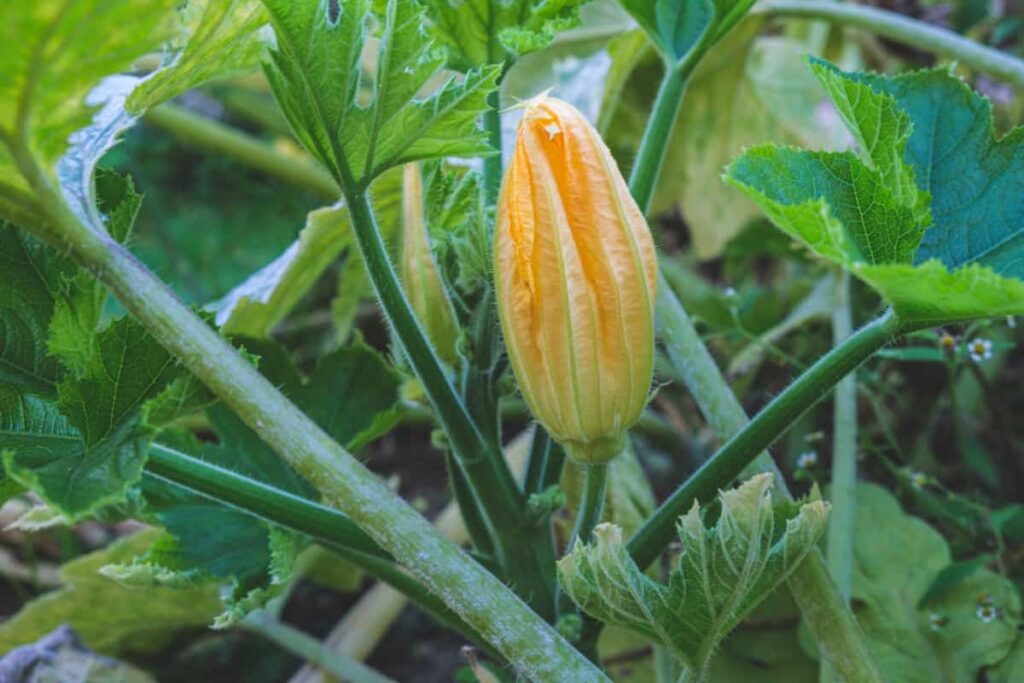
Conclusion
Encouraging female flowers in vegetables requires a combination of strategies. Attract pollinators, maintain optimal temperatures, water consistently, and ensure proper soil nutrition. Gardeners can enhance flower production and maximize crop yield by using organic pest control and practicing effective pruning.
- Crops Grown in Summer Season: Best Choices for Summer Gardening
- Organic Pest Control for Tomato Farming
- How to Maximize Sheep Farming Profit
- Broccoli Varieties: Choosing the Right Cultivars for Your Farm
- How to Raise Pigs in Your Own Backyard: A Comprehensive Guide
- Budget Friendly Sheep Shed Ideas: Cheap and Low-Cost Tips
- How Much Do Cattle Farmers Make: Revenue Streams in Cattle Farming
- Management Pests and Diseases in Your Cotton Field
- Sheep Farming Business Plan for Beginners
- Aquaponic Farming at Home: A Step-By-Step Guide
- Profitable Village Farming Business Ideas in 2024
- High-Yield Aquaculture: Fast-Growing Fish for Farming
- Effective Fish Pond Construction Techniques for Beginners
- Irrigation and Water Management in Pineapple Farming
- Blossom to Harvest: Mastering Flowering and Pollination in Papaya Farming
- Pig Fattening Essentials: From Selection to Sale for Beginners
- Raising Wagyu Cattle: A Complete Guide for Premium Beef Production
- Soil Types and Their Water Holding Capacity
- Optimizing Irrigation Schedules for Coconut Groves for Enhanced Yield
- Espresso Your Garden: Coffee Grounds for Healthier Acid-Loving Plants
- The Best Soil Mix for Snake Plants: How to Mix Your Own Snake Plant Soil
- Green Thumb Success: Expert Tips for Cultivating Greenhouse Beans All Year Round
- Bloom All Year Round: The Ultimate Guide to Indoor Hyacinth Care
- Eco-Friendly Gardening: How to Make Liquid Fertilizer from Kitchen Waste
- Ultimate Guide to Grow Anise in Pots: Explore Seed Propagation to Harvesting
- Guide to Raising Chester White Pigs: Discover Breed Facts to Growth Management
- Mastering the Elegance: The Ultimate Guide to Weeping Cherry Tree Care, Planting, and Maintenance
- Ultimate Guide to Planting Garlic in Grow Bags: Growing Strategies for Beginners
- How to Fix Spider Plant Leaf-Related Problems: Natural and Organic Remedies
- 10 Reasons Why Your Tulsi Plant is Shedding Leaves: Home Remedies and Solutions
- Optimizing Growth and Yield: The Advantages of Palm Bunch Ash Fertilizer
- Utilizing Neem Oil Extract as a Natural Pesticide for Hydrangea
- From Soil to Harvest: Various Ways in Which Farmers Can Use AI Tools
- Steps to Encourage and Induce Citrus Flowers: A Comprehensive Guide
- How to Fix Snake Plant Leaf-Related Issues: Natural and Organic Remedies
- Transform Your Garden into a Fragrant Oasis with Raat Ki Rani (Night Blooming Jasmine)
